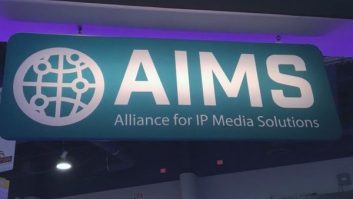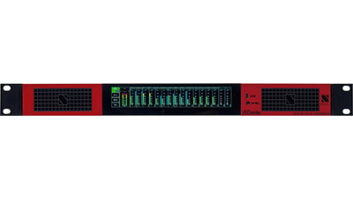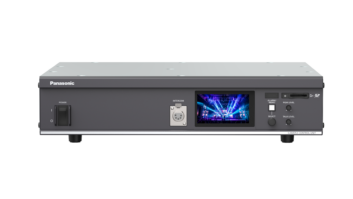
The broadcast industry is in the midst of a significant technological shift: the transition from SDI to IP-based workflows. The benefits of switching to an IP-based workflow are readily apparent: an unprecedented level of connectivity in your network infrastructure, increased scalability and channel density, increased flexibility for working remotely, rich future metadata possibilities, cost savings from being able to keep more of your crew in one central location, and a larger world already attuned to IP interactions. Early adoption is underway, and recent advancements from industry leaders, as well as collective approaches, are serving to further eliminate initial confusion and streamline the transition, making it even easier for facilities to upgrade their workflows.
One common misconception is that shifting to an IP-based workflow requires huge, disruptive infrastructure changes. However, industry leaders are working together to achieve large-scale interoperability and set industry standards and agreed upon roadmaps, thereby ensuring a more straightforward and efficient transition than may have been the case otherwise. One example is the Alliance for IP Media Solutions (AIMS), which over the past year has aligned both broadcasters and technology vendors to promote open standards for IP-based systems. By maximising hardware and software interoperability and setting IP broadcast standards, facilities of all sizes now more than ever have a clear-cut, practical path for upgrading to IP and other technologies such as cloud-based production and distribution. Similar forward-thinking initiatives such as the ASPEN Community, Sony IP Live, and the Joint Task Force on Networked Media (JT-NM) are also in place.
In the real world, this transition will unfold gradually, but at an ever-increasing pace as the larger market forces that are already engaged in IP connectivity are not sitting idly by. For the most part, IP is already a reality for broadcast delivery; it’s in everyone’s interest to move the production process forward on this front while minimising interoperability obstacles. The broadcast world has something real to offer the IP space: respect for image fidelity and guaranteed delivery at low latency. It’s in the industry’s genes.
Moving forward requires wide adoption of standards to give broadcasters the comfort and assurance that the vendors they rely upon will be moving forward to support these new ways of working. SMPTE and the Video Services Forum (VSF) have come together to develop a roadmap that details the three-step path towards adoption of IP workflows.
Today, as broadcasters consider transitioning to IP technology, the most widely used standard is SMPTE 2022-6. SMPTE 2022-6 supports hybrid IP/SDI systems and delivers the first step in a practical way forward. VSF TR-04 is the next recommended standard that uses SMPTE 2022-6 for video with embedded audio, and AES67 for separate IP addressable audio streams. As such, TR-04 is ideal for workflows that require SMPTE 2022-6 with discrete audio.
VFS TR-03 will ultimately be implemented as a standard down the line and improves on TR-04 by packetising video, audio and metadata into separate IP streams. This method will simplify the embed/de-embed path for audio and SDI signals, in the end reducing the amount of network traffic generated by uncompressed video.
At AJA, we’re following this recommended path suggested by AIMS, with current support for SMPTE 2022-6, and upcoming support for TR-03 and TR-04 coming down the line via firmware updates to existing IP hardware. This year at IBC, AJA, along with many other broadcast technology vendors, will underscore a solid commitment to the promise of an IP future with early demonstrations of next phase AES 67 support.
With broadcasters, hardware vendors and software vendors working together to back IP, now is the time to seriously evaluate the switch. Solutions from almost all major vendors are widely compatible thanks to cooperation and foresight. So go ahead and embrace IP – it’s here to stay.
By Bryce Button, product marketing manager, AJA Video Systems






